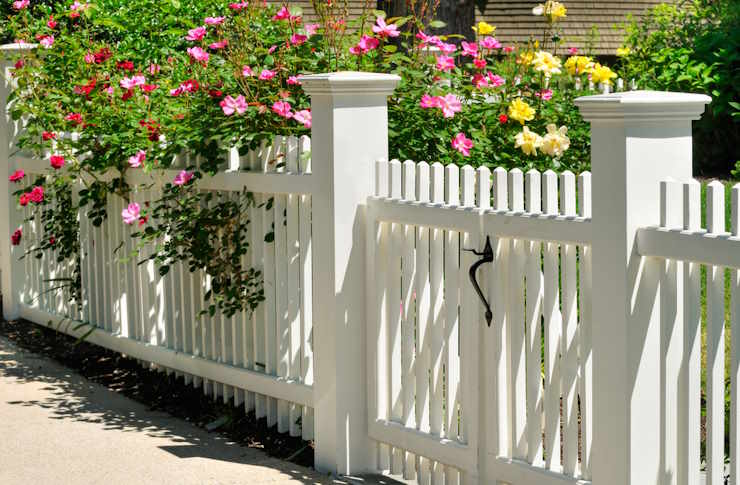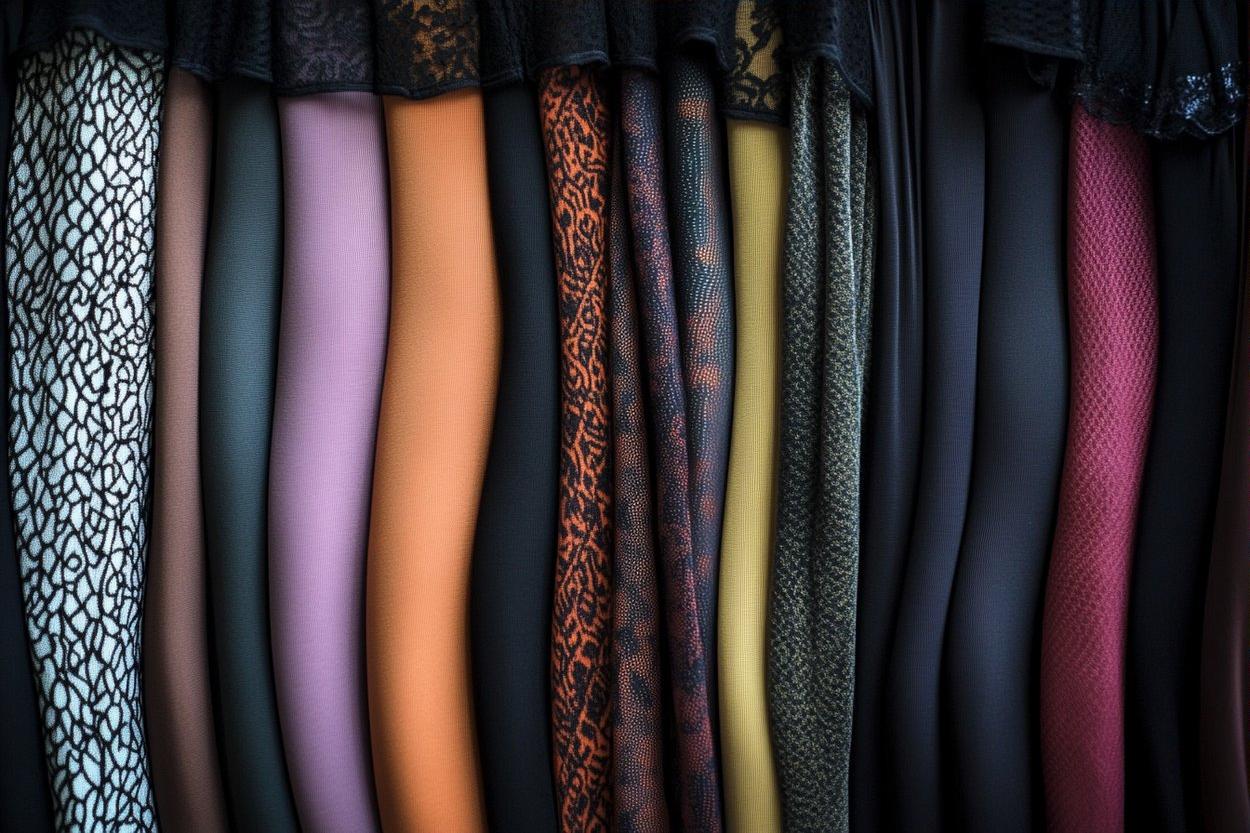How Much Does A New Garden Fence Cost In 2025? (View)
How to Select the Best Garden Fence for Your Needs Discover the most popular types of garden fences, including wood, vinyl, aluminum, chain-link, and wrought iron fences. Learn about installation costs, privacy options, and maintenance tips. Innovative ideas like gabion walls and laser-cut metal panels are also explored.

What are the most popular types of garden fences?
The type of fence you choose significantly impacts the overall cost of your project. Several materials have remained consistently popular among homeowners due to their distinct characteristics:
Wood fencing continues to be a traditional favorite, offering natural beauty and versatility. Cedar and pressure-treated pine are particularly sought after, with cedar providing natural resistance to insects and decay, while pressure-treated pine offers durability at a lower price point. Wood fences typically cost between $15 and $30 per linear foot installed.
Vinyl fencing has gained popularity for its low maintenance requirements and longevity. These fences don’t require staining or painting and resist rotting and insect damage. While the initial investment is higher than wood, ranging from $20 to $40 per linear foot installed, many homeowners find the reduced maintenance costs worthwhile over time.
Metal fencing options include aluminum, steel, and wrought iron. Aluminum is lightweight and rust-resistant, making it ideal for various climates. Steel provides exceptional durability, while wrought iron offers classic elegance but requires more maintenance. Metal fencing generally costs between $25 and $55 per linear foot installed, with wrought iron being the most expensive option.
Composite fencing, made from a mixture of wood fibers and recycled plastic, combines the aesthetic appeal of wood with the durability of synthetic materials. These low-maintenance fences typically cost between $25 and $45 per linear foot installed.
How much does garden fence installation typically cost?
Garden fence installation costs in 2025 are influenced by several key factors beyond just material choice. Understanding these components helps provide a clearer picture of your potential investment:
Labor costs typically account for 50-60% of the total fence installation price. Professional installation rates generally range from $30 to $80 per hour depending on your location and the complexity of the installation. Rural areas tend to have lower rates compared to urban centers where operating costs for businesses are higher.
The length and height of your fence directly impact material quantities and installation time. Standard residential fences typically range from 4 to 6 feet in height, with taller privacy fences up to 8 feet. Each additional foot in height can increase costs by 15-25%.
Site preparation may incur additional costs if your yard has slopes, rocky terrain, or requires extensive clearing before installation. These site challenges can add $3 to $10 per linear foot to your project cost.
Gates and accessories such as post caps, decorative elements, and lighting fixtures represent additional costs. A basic gate typically adds $150 to $500 to your project, while more elaborate designs with specialized hardware can exceed $1,000.
| Fence Type | Average Cost Per Linear Foot (Materials + Installation) | Typical Lifespan |
|---|---|---|
| Wood (Pressure-Treated Pine) | $15-$25 | 10-15 years |
| Wood (Cedar) | $20-$30 | 15-20 years |
| Vinyl | $20-$40 | 20-30 years |
| Aluminum | $25-$40 | 20-30+ years |
| Steel | $30-$50 | 20-40 years |
| Wrought Iron | $35-$55 | 50+ years with maintenance |
| Composite | $25-$45 | 20-30 years |
Prices, rates, or cost estimates mentioned in this article are based on the latest available information but may change over time. Independent research is advised before making financial decisions.
What are the best fencing options for privacy?
When privacy is your primary concern, certain fence types offer superior screening capabilities:
Solid wood privacy fences with heights of 6-8 feet provide excellent seclusion. Board-on-board or shadowbox designs eliminate gaps between fence boards, ensuring maximum privacy while still allowing some airflow. These typically cost between $25 and $35 per linear foot installed.
Vinyl privacy fences offer the same level of screening as wood but with reduced maintenance requirements. These come in various styles and textures, some even mimicking the appearance of wood. Expect to pay $30-$45 per linear foot for vinyl privacy fencing.
Composite privacy fencing provides excellent screening with the added benefit of eco-friendliness due to its recycled content. These fences resist warping and splitting better than wood, maintaining their privacy function for longer periods. Costs range from $30 to $50 per linear foot installed.
Living fences using dense shrubs or hedges can create natural privacy screens. While the initial cost for mature plants is high ($50-$100 per plant), they provide additional environmental benefits and aesthetic appeal. However, they require regular maintenance and take time to reach full density.
How can I maintain my garden fence for longevity?
Proper maintenance significantly extends the lifespan of your garden fence, maximizing your investment:
Wood fences require the most frequent maintenance, including cleaning, staining, and sealing every 2-3 years. Address any damaged boards promptly to prevent moisture infiltration. Annual inspections should check for signs of insect damage, rot, or loose components. The cost of materials for DIY maintenance averages $1-$2 per linear foot.
Vinyl and composite fences need occasional cleaning with mild soap and water to remove dirt and prevent mold growth. Inspect for cracks or warping annually, particularly after severe weather events. These low-maintenance options typically cost less than $0.50 per linear foot annually to maintain.
Metal fences require different approaches based on the specific material. Aluminum needs minimal maintenance beyond occasional cleaning. Steel and wrought iron fences should be inspected regularly for rust and repainted as needed to prevent corrosion, typically every 3-5 years at a cost of $2-$4 per linear foot.
All fence types benefit from keeping plants and soil away from direct contact with the fence, as this can accelerate deterioration. Trim vegetation regularly and ensure proper drainage around fence posts.
What are some innovative garden fence ideas for a unique outdoor space?
Modern garden fence designs go beyond simple barriers to become distinctive landscape features:
Horizontal slat fences offer a contemporary aesthetic that creates clean lines across your property. These can be constructed from wood, composite, or metal materials, with costs ranging from $25 to $45 per linear foot installed depending on the material choice and complexity.
Mixed-material fencing combines different elements such as wood with metal accents or stone pillars with wood panels. These custom designs typically cost 20-30% more than standard fences but create unique visual interest.
Decorative panel inserts using materials like bamboo, reed screening, or laser-cut metal designs can transform ordinary fencing into artistic statements. These panels generally add $10-$30 per linear foot to standard fencing costs.
Integrated planters and living walls combine traditional fencing with gardening space, creating green barriers that enhance privacy while contributing to your garden’s ecosystem. Installation costs for these systems start at approximately $40 per linear foot but vary widely based on complexity and plant selection.
Fence lighting options have expanded beyond basic security features to include sophisticated LED systems that highlight your fence design while improving safety and ambiance. Solar-powered options reduce energy costs, with basic systems starting around $10-$15 per linear foot.
Garden fence costs in 2025 reflect both practical concerns and aesthetic preferences, with options available across various budget ranges. By understanding the factors that influence pricing and the characteristics of different materials, you can make informed decisions that balance immediate expenses with long-term value and satisfaction.




